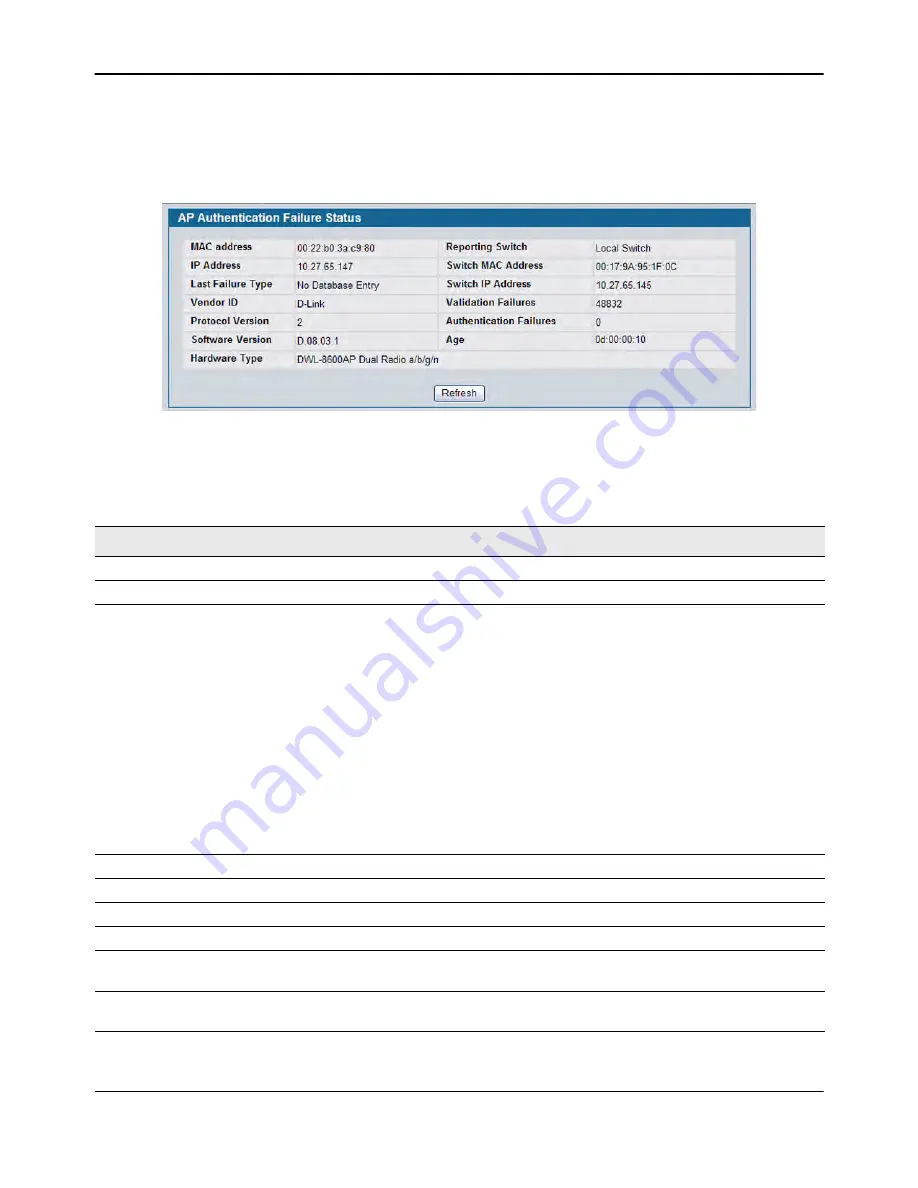
Monitoring Status and Statistics
D-Link
Unified Wired and Wireless Access System
Oct. 2015
Page 488
D-Link UWS User Manual
Viewing Details About AP Authentication Failures
To view additional data (beacon information) for an AP in the authentication failure list, click the MAC address
of the AP.
Figure 317: AP Authentication Failure Details
The following table describes the fields on the detailed
Access Point Authentication Failure Status
page.
Table 286: Access Point Authentication Failure Details
Field
Description
MAC Address
The Ethernet address of the AP.
IP Address
The network IP address of the AP.
Last Failure Type
Indicates the last type of failure that occurred, which can be one of the
following:
• Local Authentication
• No Database Entry
• Not Managed
• RADIUS Authentication
• RADIUS Challenged
• RADIUS Unreachable
• Invalid RADIUS Response
• Invalid Profile ID
• Profile Mismatch-Hardware Type
• AP Relink
Vendor ID
Vendor of the AP software.
Protocol Version
Indicates the protocol version supported by the software on the AP.
Software Version
Indicates the version of software on the AP.
Hardware Type
Hardware platform for the AP.
Reporting Switch
Shows whether the switch that reported the AP authentication failure is
the local switch or a peer switch.
Switch MAC Address
Shows the IP address of the switch in the cluster that reported the AP
authentication failure.
Summary of Contents for DWL-8600AP
Page 754: ......
















































